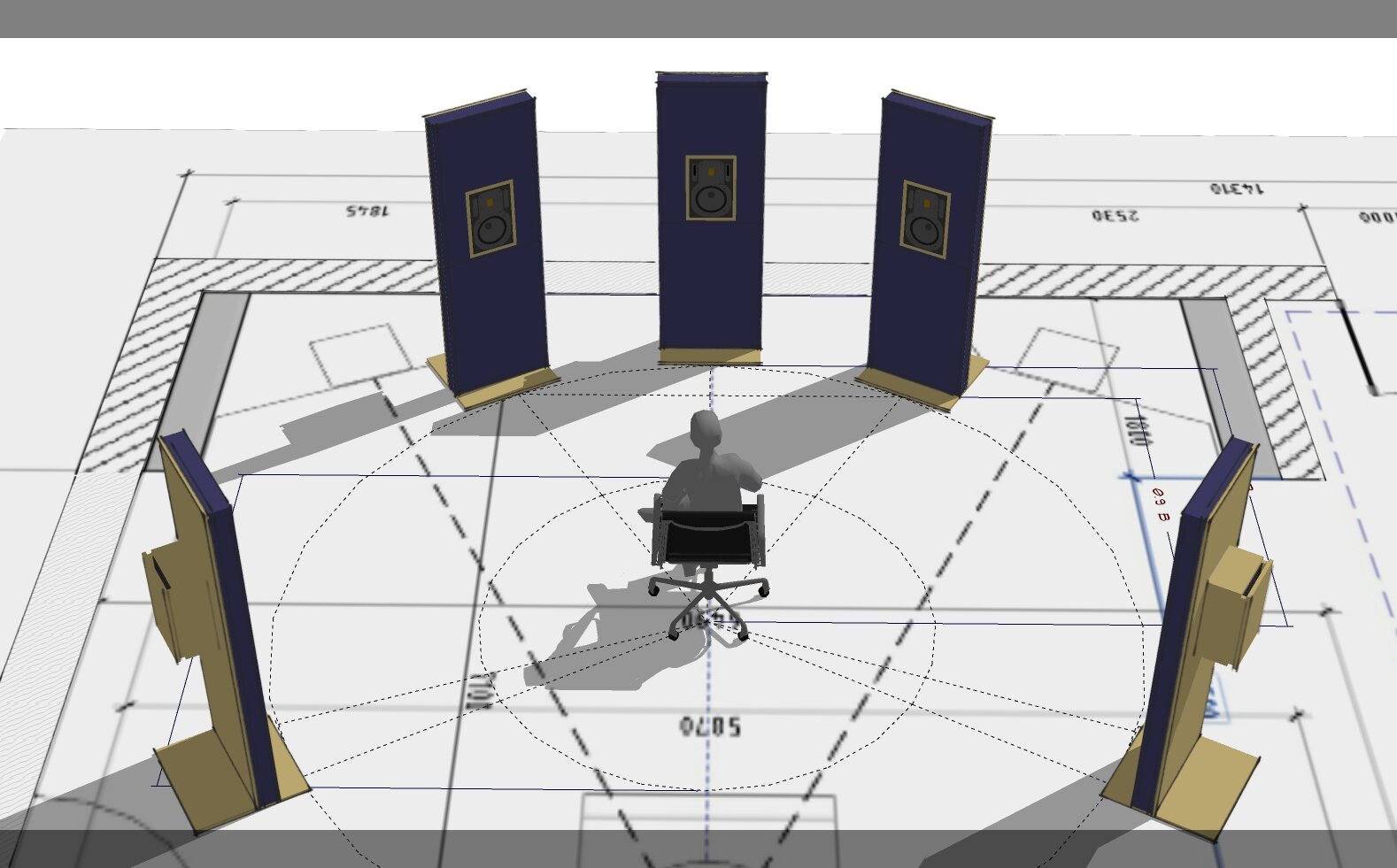-
Posts
2,301 -
Joined
-
Last visited
Everything posted by Glenn Stanton
-

Feature Request Pitch envelope in automation Lane
Glenn Stanton replied to Xel Ohh's topic in Feedback Loop
agreed. just doing my part to keep this busy ? -

Cakewalk freezing caused by a foobar plugin [solution]
Glenn Stanton replied to MisterX's topic in Cakewalk by BandLab
i found foobar had too many things going on on my systems, surprising given all the accolades. so i uninstalled everything single thing i could find related to foobar, and the system is happier for it... ymmv -

Feature Request Pitch envelope in automation Lane
Glenn Stanton replied to Xel Ohh's topic in Feedback Loop
maybe as a workaround there are things like Waves Tune / Pitch, VVocal (ahem...), etc which might have automate-able controls for pitch? -

Your ears are lying about guitar tone
Glenn Stanton replied to Bruno de Souza Lino's topic in The Coffee House
wait until you try the blue light jewel. not only sounds better, but your playing improves as well ? -

Pertinent Info for IK Reinstall of Syntronik and Associated Libraries
Glenn Stanton replied to cclarry's topic in Deals
similar issue with syntronik. after an hour or so i gave up and disabled it in CbB and removed the icons. the synths show up in sampletank 4 and that's enough for me. -
if it's a single recording - import into the first audio track. then split it so you have a second or two before and after each performance. drag the song parts to new tracks (keep it aligned with original performance may be desired). then copy all the in-between stuff - appluase, talking to the crowd etc into another track to you can adjust it later (for example you might like to tweak the applause and speaking bits with reverb, levels, eq, etc so it seems like the entire original set). now bounce each track to clip. this trims them and also create separate audio files. close the project. now you can use your favorite audio editor to reduce noise, clicks, pops, etc etc. depending on the tool, you could adjust from individual levels (master rebalance - Izotope). i recently used RX7 and Ozone 9 on my "work" band gig (6 piece band) at stationary bike event which had a lot of reverberation and noise going on in the room and it cleaned it up pretty well. ymmv. once done - re-open the project and do what you like to each track. i would create some busses like "acoustic" "electric" "audience" etc to feed overall levels and shaping depending on the content. finally you can export the individual tracks as desired or "create an album" track - trimming audience bits etc to get a good flow if there isn't one already.
-
[thoughtfully crunching on the popcorn] carry on ?
-
a bit of sunshine. or not. Don't Worry About Tomorrow © Glenn Stanton in seven days in seven doors i'll tell you now they hide down below they lock the rotten ed up to your head in about an hour baby you'd be better off dead they be bad to me they be bad to you disavowed baby i don't what to do same old lyin' lied tweedle dee no hide can i get a handle randy some friend of mine are there a pair of devil hearts hangin' on the end of my line? oh, don't have to worry about tomorrow, no 'cause tomorrow might not ever come get down baby get down low get a handle baby we got ways to go get down on the right down on the left oh, right up the middle baby head 'til you're dead because hatred pays no mind are there a pair of devil hearts hangin' on the end of my line? oh, don't have to worry about tomorrow, no 'cause tomorrow might not ever come
-
thanks! i actually did have more on it originally but i liked it a bit dryer, made it feel "closer"
-

Waves Audio Inc. folder on "C:" drive taking a lot of space
Glenn Stanton replied to abacab's topic in Instruments & Effects
the cache will be replenished when you install plugins but it can be greatly reduced by clearing old stuff first ? i think mine is 980MB -

Need help from Midi Gurus: 1/4" out to MIDI converter?
Glenn Stanton replied to Billy86's topic in Cakewalk by BandLab
check out some CAL scripts to strip out the majority of notes - i've used the "lowest note only" script (i'll have to see if i can remember the exact name) to strip out the chord info and leave only the bottom notes which then if transpose as needed for the strumming mode. lately i just play the single note on the guitar or keyboard to get the strumming. i've found the Session Guitarist very nice but you tend to have to play it differently than GS-2 because the SG are using sampled playing and the strums don't always end once the note is off - a good thing in many cases, whereas GS-2 is synthetic all the way so it's more responsive. key switching is also important to consider. i tend to do the key switching as i play it out on my keyboard rather than waiting for later. depends of course on what my source is - if existing or already performed strumming - CAL script or manual edits, otherwise i just play it intending to use a virtual instrument. -

Waves Audio Inc. folder on "C:" drive taking a lot of space
Glenn Stanton replied to abacab's topic in Instruments & Effects
yeah, my Waves folder is about the @ 9.6GB (after clearing cache and using on v11/v12 plugins), Slate @ 7.7GB, CbB @ 3.5GB (Dim Pro, etc), Kontakt libraries @ 15GB total - but they're all on the D drive where i have content and project files. within the Waves folder are all kinds of file types which are the working bits and only the shell DLL are in the VST and VST3 directories. -

Errors, errors, and more errors...
Glenn Stanton replied to Diana Chahine's topic in Cakewalk by BandLab
just in case we're losing track of the testing effort here ? -
i don't recall having issues in v8 ( i started using CW in v3) but maybe this will help: http://www.cakewalk.com/Documentation?product=SONAR&language=3&help=Playback.27.html it seems like the compatibility setting is more for correcting things from a previous version... Pan Law compatibility mode When using a non-default pan law with floating point or 24-bit audio, Cakewalk would previously apply the pan law twice; once at the clip level and once more at the track level. In SONAR 8.5.2 and later, pan laws are only applied once at the track level and only for mono tracks. Any clip pan envelopes will continue to work, but behave strictly as a balance control. If you have existing projects that use a non-default pan law (i.e. other than 0dB center sin/cos taper), the mix might sound louder in Cakewalk.
- 1 reply
-
- 1
-

-

Two things that could add more flexibility.
Glenn Stanton replied to Bruno de Souza Lino's topic in Feedback Loop
brillant! i thought there was something like this as well, but being a context menu guy, i was looking for it under a context menu option... -

Waves Audio Inc. folder on "C:" drive taking a lot of space
Glenn Stanton replied to abacab's topic in Instruments & Effects
yeah, for some reason i find a bunch of stuff hiding in the (x86) including 32-bit apps when i'm pretty specific about 64-bit versions only... thanks for the link to the treesize, i'll give it a try. -

Waves Audio Inc. folder on "C:" drive taking a lot of space
Glenn Stanton replied to abacab's topic in Instruments & Effects
i use the WinDirStat app periodically to find folders that are "heavy" - Waves, and a number of products including Slate, any number of virtual instruments etc often install some large libraries and supporting files into the ProgramFiles and Documents folders as well as Program Files folders. i think at this point i have about 30 links to move this stuff off my C:/ drive on onto my contents drive. -

Import multiple clips into 1 audio track?
Glenn Stanton replied to sadicus's topic in Cakewalk by BandLab
my apologies - i mixed up some responses you made in another thread with @msmcleod -

Two things that could add more flexibility.
Glenn Stanton replied to Bruno de Souza Lino's topic in Feedback Loop
agreed - bouncing down was something done to handle track limits. and there are pros and cons to it - one pro - you're forced to make mix decisions early ? cons - if your early mix decisions are wrong you need to re-assemble all the tracks, copy overs, etc to get back... lot's of "imperfections" from the old days, but then again, great song writing conquers all... for me - my default template uses tracks -> sub-mix busses -> stem busses -> master mix busses. so i can pick which level of granularity i want to change things, and exporting parts, stems, or mixes are reasonably obtainable within my normal workflow. i can solo "stem" sections to see vocals vs low end vs instruments etc and make changes on the sub-mix or tracks as needed. and adding additional stem busses if needed. some projects i do for other folks they may want 6-8 stems for the mastering process - vox up/down, solos up/down, etc type of things. -

Import multiple clips into 1 audio track?
Glenn Stanton replied to sadicus's topic in Cakewalk by BandLab
sorry - i though t to add it to your suggestion, and in case you didn't know about it. -

Import multiple clips into 1 audio track?
Glenn Stanton replied to sadicus's topic in Cakewalk by BandLab
@scook there is also a feature called "Flatten Comp" which creates a new take lane composed of all the other (comped) takes and then solos it (in take lane, not track). the take shows an "unlock" icon which indicates the "clip data" is locked - it's not (apparently) a destructive operation as the takes are in one WAV file and the new one is in another WAV file. -

Two things that could add more flexibility.
Glenn Stanton replied to Bruno de Souza Lino's topic in Feedback Loop
that would be a handy feature - i'd caveat by saying it might be nice to have something like this as a "bounce to clip" function where i could select a number of tracks and do a fast bounce to a new clip/new track with the source track effects etc being applied. something much faster than a "record" activity. -

*.pcp files --- but how to change the save location
Glenn Stanton replied to Astraios's topic in Cakewalk by BandLab
correct, you cannot create a link if a conflicting name exists - so copy the original folder first, "x out" the old dir, then do the mklink. this way the old directory is still there as a backup, as well as the copy you made (the new target). if it all checks out, then delete the x'd out folder. Copy C:\Users\MyName\OldDir -> D:\Settings\Product\OldDir C:\Users\MyName\OldDir -> C:\Users\MyName\OldDir.X mklink /J "C:\Users\MyName\OldDir" "D:\Settings\Product\OldDir"




